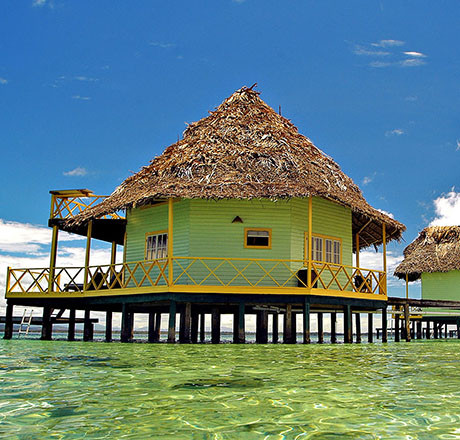Panama
Flower Power
Tom Hart Dyke is a plant-mad globetrotter, as passionate about leafy things as the average Brit is about beer, and there’s no one else on earth who could entertain you so eloquently – or animatedly – on the subject of botany. Even if it does get him into serious trouble from time to time.
On the hunt for rare flowers in southern Panama in March 2000, Tom and a fellow backpacker found themselves kidnapped at gunpoint and threatened with execution. Miles from civilisation in the lawless Darién Gap, which separates Panama and Colombia, Tom thought his number was up. It was a feeling that rarely left him during the next nine months he was in captivity.
“We definitely thought we were going to die, but keeping little gardens wherever we were dragged around to helped me deal with it,” Tom says. “It sounds ridiculous, but they were accusing us of being drug runners, CIA, all sorts, and growing plants was a way of me expressing who I really was.”




On 16 June, three months into his captivity, Tom was told he had five hours to live. With shaking hands he reached for his diary and started sketching out a plan for a botanical gardens shaped like a map of the world and featuring plants from every continent.
“It just came to me, totally instantaneously,” he says. “I’d never thought of it before – this guy and his AK-47 were inspirational. When it transpired that we weren’t dead in five hours, I kept the idea and it kept me going throughout the rest of the ordeal.”
More than that, it provided Tom with a grand plan that, once he was released, has kept him occupied ever since. With more than 8000 species, Tom’s ‘World Garden’ in Kent – which is open to the public – is one of the largest private collections in Europe. And getting the plants has been half the fun.
“The highlight of my plant-hunting career was in 2010, when I went to a remote part of Peru, near the border with Bolivia,” he says. “I was at 14,000 feet above sea level and was hoping in particular to see the world’s tallest flower spike, the queen of the Andes, a bromeliad called puya raimondii.”
He found not just one but 10,000 of them, in a valley where almost no man had ever set foot before. “Some were 44 feet tall,” he says. “These huge, phallic symbols growing up into the skies. It was like something from Jurassic Park, just extraordinary, and to bring back some of their seeds and have some growing at the World Garden and nowhere else in the UK is magnificent. It proves that plant hunting still has its place.”
Tom first got his hands dirty when he was just three, after his grandmother gave him a packet of carrot seeds and pointed him at some soil. Growing up in the lovely surrounds of historic Lullingstone Castle – the 650-year-old Hart Dyke family seat – Tom found gardening was just the hobby for an outdoor-loving nipper with acres of land at his disposal, and it wasn’t long before he noticed the myriad plants dotting the Kent countryside around his home.
“Forget going to the pub,” he laughs, “I had a little greenhouse which was just about able to keep the temperature above freezing and that was a gateway to tropical plants.”
Tom’s real love is orchids – the delicate, extravagantly flowered, almost mythical flora that have kept plant hunters in a state of nirvana for centuries – and surprisingly, they were to be found in abundance in his own neighbourhood.
“I think what really got me hooked, though, was a cycling trip I took across France, Spain and Portugal in my teens,” says Tom. “Being in the Pyrenees and seeing orchids in the wild was hugely exciting.”
Tom can talk for hours about orchids and his travels to find them, and gets especially excited when explaining how they often grow in unusual and little-seen places. Predictably, his dream discovery involves the kind of voyage that Charles Darwin would have approved of. “It’s the black orchid,” Tom gushes, “and it has yet to be found. But it is rumoured to be on Kalimantan on the island of Borneo.”
While Tom clearly gets something out of plants that most of us don’t, he’s adamant that anyone who travels is missing a treat if they neglect to pack their flora goggles. “You go to the Canaries, which is the botanical Galapagos of Europe, or even to Sydney and you spend two weeks in the bar and getting sunburned without realising you were 15 feet away from some incredible and rare plants. That, to me, is ridiculous.”
But what if we don’t like flowers?
“It doesn’t matter,” he shrugs. “Just a couple of hours to observe your surroundings would make your trip so much more fulfilling.”
Words Mike Peake
Tags: nature, panama, travel job, unusual experience
 (
(










